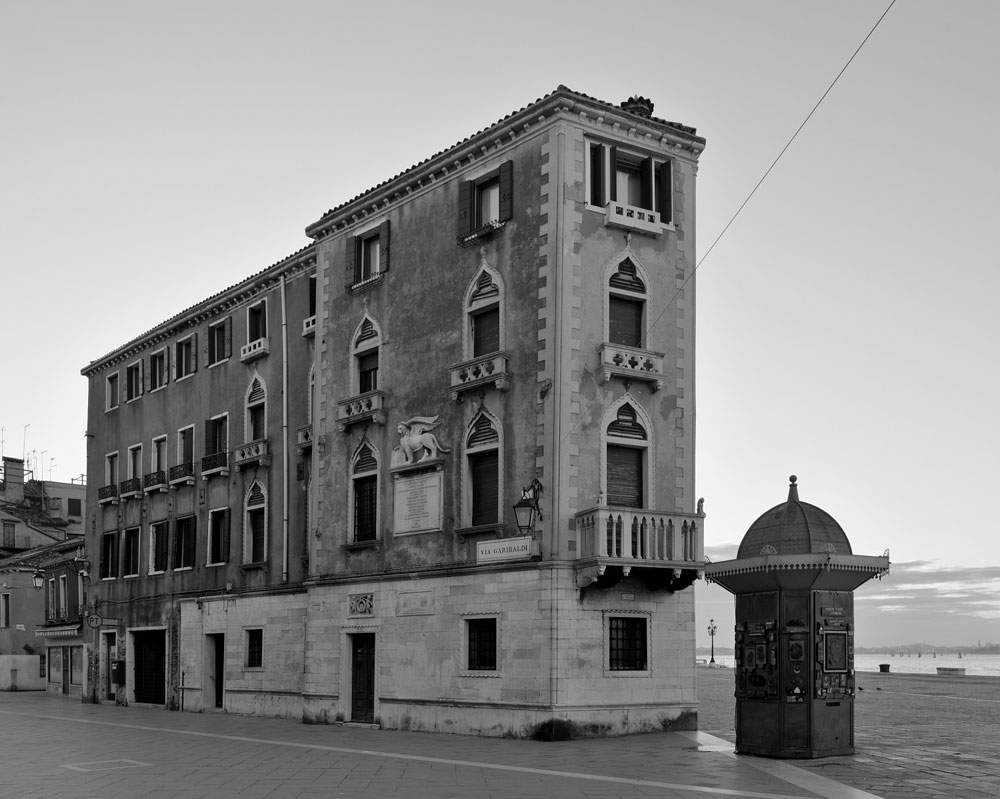An empty, black-and-white Venice: more than 4,000 photographs from the city's largest-ever archive
After six months of closure for maintenance work, Palazzo Grassi in Venice reopens to the public with the Hypervenezia exhibition event dedicated to the city of the lagoon on the occasion of the 1,600th anniversary of its founding. The Venice Urban Photo Project, conceived and realized by Mario Peliti (Rome, 1958), an architect, publisher and gallery owner, will be presented for the first time.
Scheduled to run from September 5, 2021 to January 9, 2022, the Hypervenezia exhibition is curated by Matthieu Humery, curator at the Collection Pinault, and will offer an immersive journey on the second floor of Palazzo Grassi around three installations: a route of about four hundred photographs tracing an ideal itinerary through the sestieri of Venice, a site-specific map of the city composed of a mosaic of about nine hundred geolocated images to offer an overview of Venice, and a video installation of more than three thousand photographs that flow accompanied by a never-before-seen musical composition created especially for the exhibition by musician and composer Nicolas Godin.
Beginning in 2006, Peliti began systematically mapping the city of Venice with his photographs, with the intention of collecting the largest and most organic archive of images of the city ever made and to return a never-before-seen representation of the entire urban fabric. To date, the photographic archive has more than 12,000 shots, all in black and white, taken under the same light conditions, with no shadows brought in and no people. These aspects make it possible to give temporal unity to the perception of the city. The homogeneity of the light makes visible all the details of the facades, even the least relevant, and the lack of people forces the observer to reflect on the possible fate of the city: a city without inhabitants. At the same time, the silence that pervades thousands of photographs offers the city itself a chance to show itself in its urban and architectural articulation.
The peculiarity of this archive is represented not only by its size, but also by the homogeneity of the vision, the consistency of the shooting methods and the continuous deepening in the author’s knowledge of the city. Hypervenezia’s intent is thus to offer visitors a parallel, empty and timeless Venice. The Venice Urban Photo Project was first initiated in film, then since 2013 in digital format.
The photographic survey is scheduled to be completed by 2030. At the end of 2018, an agreement was signed between Mario Peliti, the Istituto Centrale per il Catalogo e la Documentazione (ICCD), and the Soprintendenza Archeologia, Belle Arti e Paesaggio for the metropolitan area of Venice, aimed at enhancing the Venice Urban Photo Project through the creation of a digital fund (Venice Urban Photo Archive) at the ICCD.
The exhibition is realized with the support of Saint Laurent.
Image: Venice Urban Photo Project / Mario Peliti. Castello, Via Garibaldi, 2015
 |
| An empty, black-and-white Venice: more than 4,000 photographs from the city's largest-ever archive |
Warning: the translation into English of the original Italian article was created using automatic tools. We undertake to review all articles, but we do not guarantee the total absence of inaccuracies in the translation due to the program. You can find the original by clicking on the ITA button. If you find any mistake,please contact us.





























